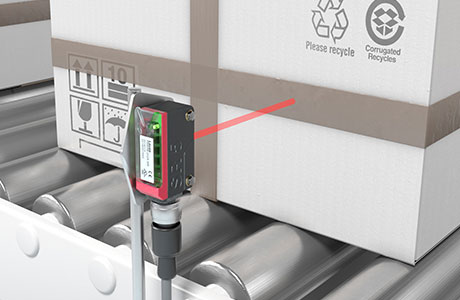Key Takeaway
Photoelectric sensors in packaging machines ensure precise object detection. They accurately track items on production lines, ensuring proper counting and monitoring of product flow. This accuracy is essential for efficiency.
Additionally, these sensors create safety barriers around machinery. If the barrier is breached, the machine stops automatically, preventing accidents. This makes photoelectric sensors invaluable for improving safety and reliability in packaging processes.
The Role of Photoelectric Sensors in Precise Package Detection
Photoelectric sensors play a critical role in packaging machines by providing precise and accurate detection of packages as they move through various stages of production. These sensors use light to detect the presence or absence of an object, allowing machines to perform specific actions such as labeling, sealing, or counting packages. One of the key benefits is the high level of accuracy they offer. They can detect packages of varying sizes, shapes, and materials, ensuring that every package is accounted for during the production process.
For example, in a high-speed bottling line, photoelectric sensors can detect the exact moment when a bottle passes by, triggering the labeling mechanism to apply the label in the right position.

How Sensors Improve Speed and Accuracy in Packaging Lines
In modern packaging lines, speed and accuracy are essential for meeting production targets. Photoelectric sensors enhance both by enabling machines to operate at higher speeds without compromising on precision. These sensors are designed to detect objects in real-time, allowing machines to respond instantly and perform actions like sealing, labeling, or cutting with split-second accuracy. This is particularly important in industries such as food and beverage, where the packaging must be completed quickly while adhering to strict quality standards.
By improving the speed of operations, photoelectric sensors help businesses increase their throughput without adding more labor or machines. These sensors also ensure that each package is processed correctly, minimizing errors and rework. In high-speed environments, where thousands of items are packaged every hour, even a small improvement in accuracy can lead to significant cost savings. Moreover, the use of sensors reduces the likelihood of machine stoppages caused by package misplacement or misalignment, keeping production lines running smoothly and efficiently.
Ensuring Quality Control with Photoelectric Sensors
Quality control is a top priority in any packaging process, and photoelectric sensors play a vital role in ensuring that standards are consistently met. These sensors are often positioned at various points along the packaging line to check for defects, missing components, or misaligned labels. For example, a photoelectric sensor can detect whether a carton is properly sealed or if a product is missing from the package. If an issue is identified, the sensor can trigger the system to reject the faulty package, preventing it from reaching the customer.
In industries where precision is paramount—such as pharmaceuticals or electronics—these sensors are indispensable. They ensure that every item is packaged according to specifications, reducing the likelihood of defects or recalls. Additionally, photoelectric sensors can be fine-tuned to detect even the smallest anomalies, such as a slight variation in label placement or an underfilled container. By maintaining strict quality control throughout the packaging process, these sensors help companies build trust with their customers and protect their brand reputation.
Reducing Waste and Increasing Efficiency in Packaging Processes
One of the most significant benefits of using photoelectric sensors in packaging machines is their ability to reduce waste and increase efficiency. In traditional packaging lines, manual inspections or less accurate detection methods often lead to packaging errors, resulting in wasted materials and time. Photoelectric sensors eliminate these inefficiencies by ensuring that only correctly packaged items proceed through the line. This reduces the amount of waste generated by packaging mistakes, such as misprinted labels, poorly sealed containers, or products placed in the wrong packaging.
Furthermore, by automating the detection and handling of packages, sensors help streamline operations and reduce the need for manual intervention. This not only speeds up the packaging process but also frees up workers to focus on more complex tasks. Over time, the reduction in waste and the increase in operational efficiency lead to significant cost savings, making photoelectric sensors a valuable investment for any packaging operation. By optimizing the use of materials and reducing production downtime, these sensors contribute to a more sustainable and profitable packaging process.
Advanced Applications of Photoelectric Sensors in Smart Packaging Systems
As packaging technology continues to evolve, photoelectric sensors are becoming increasingly integrated into smart packaging systems. These systems use sensors to monitor and adjust packaging operations in real-time, ensuring that every step of the process is optimized for maximum efficiency and accuracy. For example, in a smart packaging system, photoelectric sensors can communicate with other machines to adjust the speed of the packaging line based on the flow of products. This level of automation allows for a more flexible and responsive packaging process, capable of adapting to changes in demand or production conditions.
In addition to improving speed and accuracy, smart packaging systems equipped with photoelectric sensors can also gather valuable data on the performance of the packaging line. This data can be used to identify bottlenecks, optimize workflows, and predict when maintenance is needed. By providing real-time insights into the packaging process, these sensors help businesses make informed decisions that improve overall efficiency. The integration of photoelectric sensors into smart systems is paving the way for the future of packaging, where automation and data-driven decision-making are the keys to success.
Conclusion
The use of photoelectric sensors in packaging machines offers numerous benefits, from improving accuracy and speed to ensuring quality control and reducing waste. These sensors are an essential component of modern packaging systems, enabling businesses to streamline their operations and achieve higher levels of efficiency. As packaging technology continues to advance, the role of photoelectric sensors will only become more important, particularly in the development of smart packaging systems that can adapt to changing production conditions. By investing in these sensors, companies can optimize their packaging processes, reduce costs, and enhance product quality—all while staying ahead in a competitive market.
